Rialto, CA Pollen and Allergy Report for Summer 2023
Pollen Allergy Trends in Rialto, CA
When is pollen lowest in Rialto, CA?

February
Lowest month total PPM
Avg. PPM
When is pollen highest in Rialto, CA?

March
Highest month total PPM
Avg. PPM
How does pollen in Rialto, CA compare to California?
Rialto has a lower average PPM than the state of California.
Rialto yearly avg PPM:
California yearly avg PPM:
How does pollen in Rialto, CA compare to the USA?
Rialto has a lower average PPM than the USA.
Rialto yearly avg PPM:
USA yearly avg PPM:
Is pollen worse this year in Rialto, CA?
Spring 2023 was better than spring 2022.
Spring 2023 PPM:
Spring 2022 PPM:
Average PPM in Rialto, CA
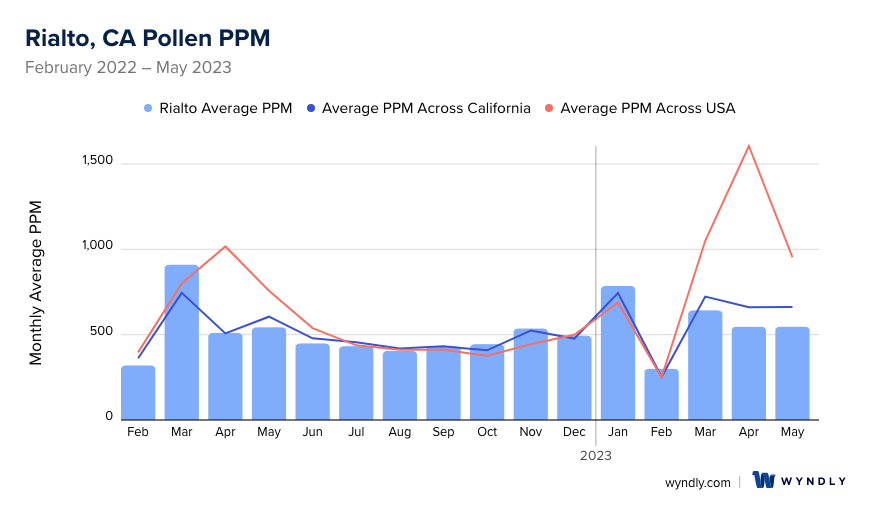

Rialto, CA Pollen and Allergy Breakdown by Month
Grass
When is grass pollen highest in Rialto, CA?
May has the highest grass pollen in Rialto, CA with an average PPM of
When is grass pollen lowest in Rialto, CA?
December has the lowest grass pollen in Rialto, CA with an average PPM of
Tree
When is tree pollen highest in Rialto, CA?
March has the highest tree pollen in Rialto, CA with an average PPM of
When is tree pollen lowest in Rialto, CA?
August has the lowest tree pollen in Rialto, CA with an average PPM of
Weed
When is weed pollen highest in Rialto, CA?
November has the highest weed pollen in Rialto, CA with an average PPM of
When is weed pollen lowest in Rialto, CA?
February has the lowest weed pollen in Rialto, CA with an average PPM of
Rialto, CA Pollen Monthly Breakdown by Pollen Type
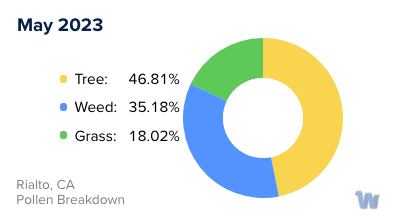
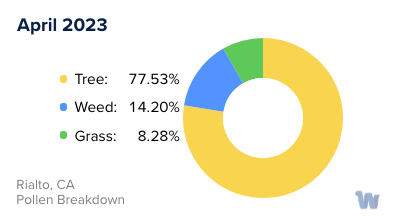
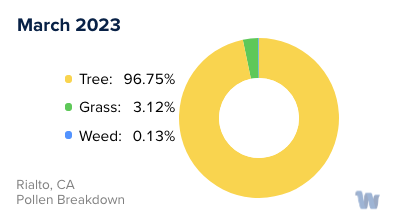
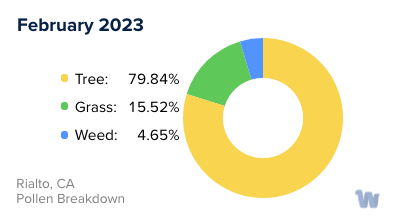
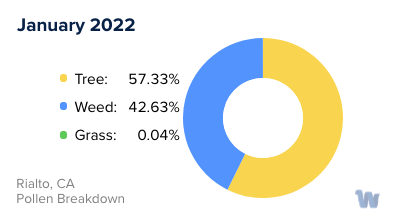
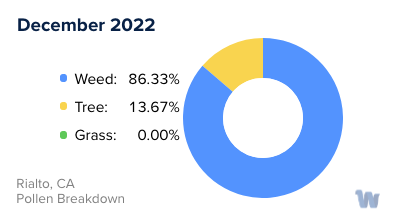
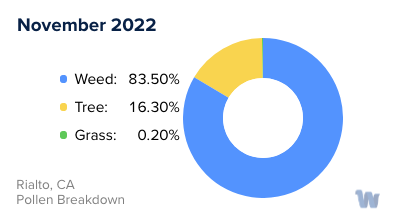
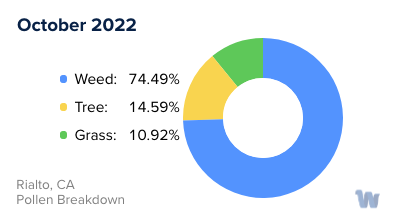
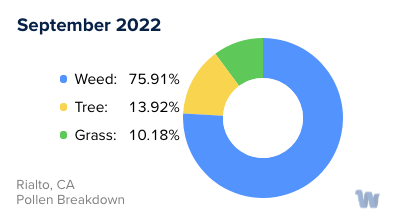
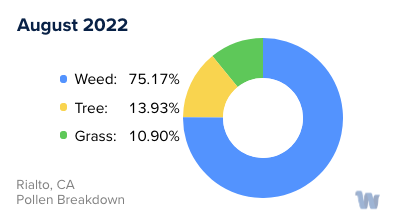
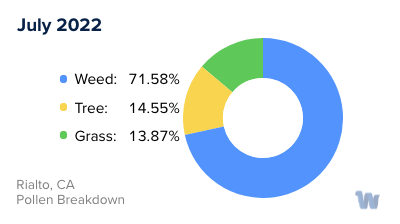
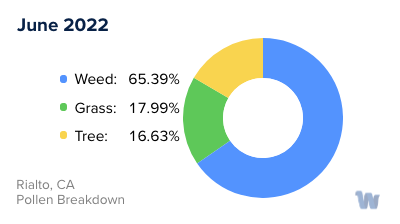
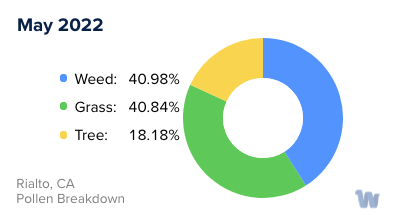
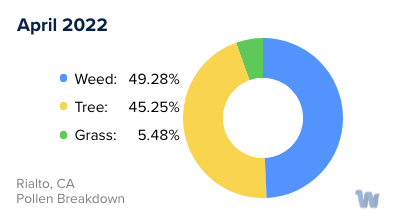
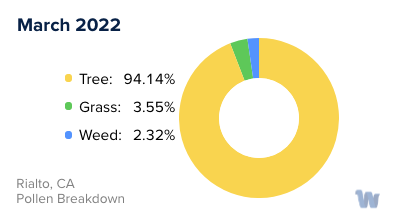
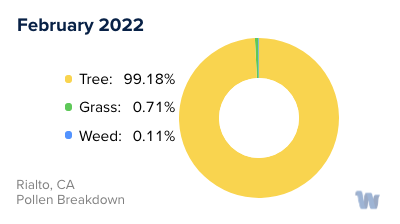
Pollen and Hay Fever in Rialto, CA
In the city of Rialto, California, many residents experience the seasonal inconvenience known as pollen allergies, often referred to as hay fever. This condition arises due to the body's reaction to airborne pollen particles from various plants, and it is particularly prevalent during certain seasons of the year. The local climate and vegetation in Rialto contribute to the types of pollen present and the timing of their release.
Firstly, let's explore the types of pollen that commonly trigger allergies in Rialto. There are generally three types: tree pollen, grass pollen, and weed pollen.
Tree pollen, which is predominantly released in the spring, is a common culprit. Rialto is home to various species of trees such as oak, cedar, and pine, each contributing to the pollen count. The tiny, lightweight particles from these trees are easily carried by the wind, becoming airborne allergens.
In the late spring and early summer, grass pollen takes center stage. Bermuda grass, ryegrass, and Kentucky bluegrass are common grasses in Rialto. Their pollen can cause hay fever symptoms in those with grass pollen allergies.
As we transition into late summer and fall, weed pollen becomes the main concern. Weeds such as ragweed, sagebrush, and Russian thistle are known to release copious amounts of pollen into the air, causing allergies to flare up.
In each of these seasons, the combination of warm temperatures, wind, and low rainfall in Rialto can result in high pollen counts. This can be particularly challenging for those with hay fever. It's also worth noting that the specific timing and severity of pollen seasons can vary year by year, influenced by factors such as weather patterns and climate conditions.
In summary, pollen allergies in Rialto, California are influenced by the local flora and seasonal changes. Understanding the types of pollen and their respective seasons can help residents better anticipate and manage their allergy symptoms. While this piece does not discuss treatments or remedies, knowledge about the cause can be a powerful tool in managing one's health.

